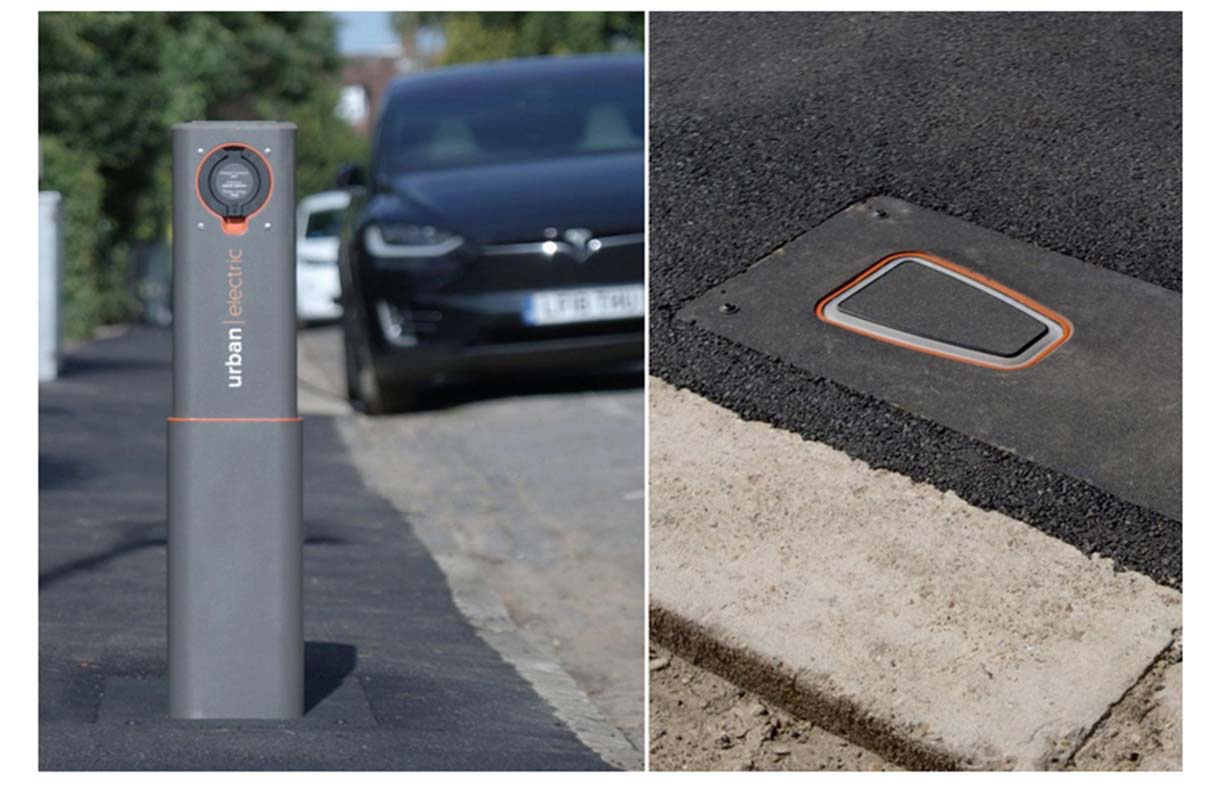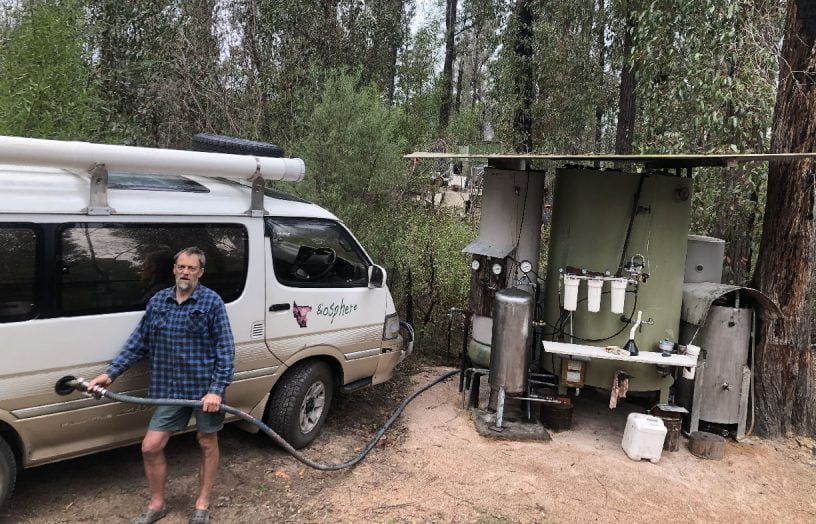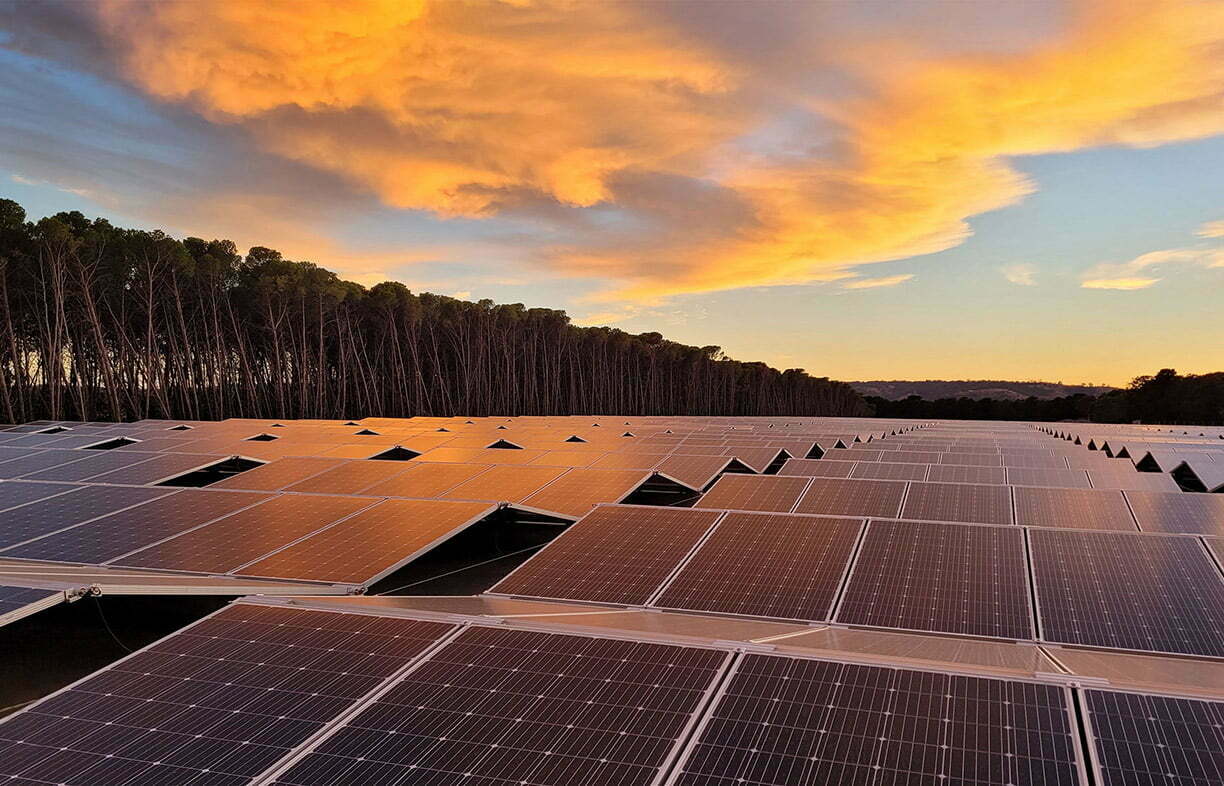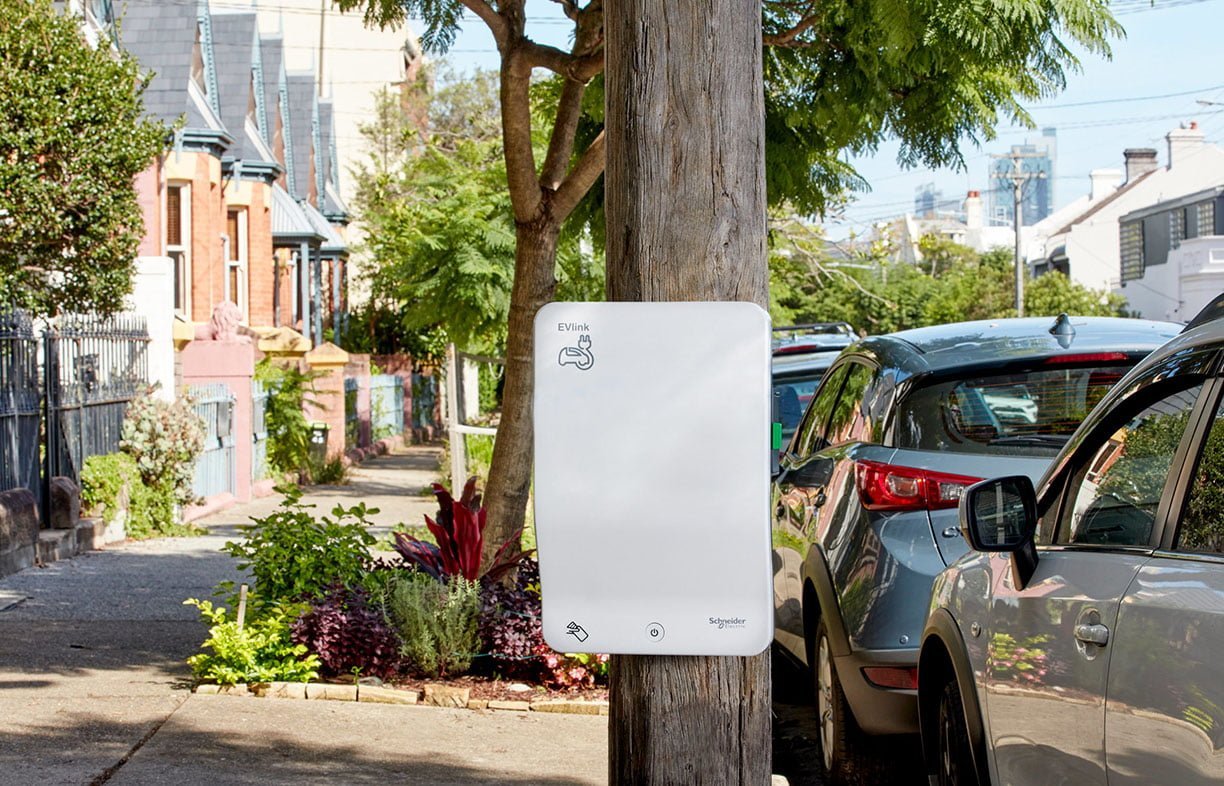EV charging hits the streets

How do you charge your EV if you don’t have off-street parking? A ‘smart’ light pole and a pop-up charging pillar are options being explored for on-street car charging, explains Bryce Gaton.
Given the average Australian daily commute is around 30 km, the charging speeds and times offered by AC charging are now well capable of providing overnight (or even over lunch) recharging well in excess of most average vehicle travel patterns (see Table 1).
As a result, the common finding of studies about how EV owners charge their cars is that 90% or more of charging is done using an AC charger (EVSE) at the home, workplace or destination, be that destination a country B&B or a shopping centre.
EV charging in homes is pretty much sorted (see ‘Is your home EV ready?‘ in Renew 143) and charging for unit or strata title dwellers has a growing set of available options (see ‘Strata strategies’ in Renew 145). You could say that 90% of charging is now able to be dealt with and all that is left is to speed up the rollout of DC charging to facilitate that remaining 10%.
Or maybe not … In Europe, something like 50% of city dwellers do not have off-street parking for their cars, so home charging in a driveway or garage is not an option. In Australia, our urban sprawl means the percentage (and number) of homes without off-street parking is much less, but that doesn’t apply in inner-city areas, where off-street parking is not available for the majority of homes. If no solution is offered, it could create a significant barrier to EV adoption in the very built-up areas that are crying out for ways to reduce airborne pollution.
Currently for such homes in Australia, electricity supply laws generally prevent power cables crossing a property boundary, which means a homeowner can’t legally install their own EVSE onto the street, or even run an extension lead out to a car.
But options are in development.
Options for on-street charging
Overseas, a number of innovative solutions to on-street AC charging are being trialled. One approach is a pop-up EVSE pillar, which disappears under the surface of the street when not in use.
The pop-up EVSE pillars from UK business Urban Electric Networks (pictured below) recently won a UK industry innovation award. They can be activated and controlled by a phone app and currently offer charging at up to 7 kW, which allows for most EVs to be fully charged overnight. Around a dozen of these pop-up EVSEs are currently in trials in Oxford in the UK.
An alternative solution is a light pole mounted EVSE, provided by businesses such as Ubitricity in the UK (and currently being trialled in Leicester) and ENE-HUB here in Australia. According to Ubitricity, their system is about 10% of the cost of installing a stand-alone EVSE and power supply, as they can use existing light pole cabling and infrastructure. Installing them can avoid the cost of digging up the street. Plus, the changeover of street lighting to LEDs that is happening anyway helps: using LEDs frees up a significant proportion of the electricity supply to the pole, so the added draw of an EV on a low power setting is unlikely to require new cabling.
What’s happening in Australia?
Here in Australia, as ever, things are moving more slowly, but one trial is just beginning as Renew goes to press. In Sydney, ENE-HUB and charging network company ChargeFox have teamed up to trial 7 kW AC charging equipment mounted on ENE-HUB ‘smart light poles’ (ene-hub.com/smartnode), with the potential for 22 kW in the future. Twenty of these pole systems are now being commissioned in the western Sydney suburbs of Blacktown and Canada Bay.
Issues with on-street charging
Street charging does come with issues. Stand-alone bollards are often frowned upon by councils as they increase street clutter and create maintenance and safety hazards—they can easily be hit by passing traffic, for example. They can also be hard to install in inner city areas where underground services already compete for room.
The non-standard position of charging sockets on EVs can cause another set of issues, such as legally parking to access the EVSE. When parallel parking it is illegal to park facing the wrong way or across two parking spots, nor is it legal to reverse into angle parking—so if your EV’s charging socket is on the rear or right side of the car, you could run into issues. There’s also the issue of safety if leaving an EV plugged in with its lead crossing part of the footpath.
As a result, some councils in Australia favour a public parking EV charging model, such as the Adelaide Electric Vehicle Charging Hub. In this model, a section of enclosed carpark is converted to provide charging in parking bays that can be driven or reversed into with tripping and collision issues minimised.

Inner-city dwellers can still charge!
So what should a prospective inner-city EV owner do right now? Even if your home lacks both on- and off-street charging options, there are a number of ways to keep an EV charged.
First, you can manage the majority of your charging via a DC fast-charger (or Tesla Supercharger, if you own a Tesla) every week or even every two weeks, depending how far you travel (but note that the current Renault EVs, the Zoe hatch and Kangoo ZE van, cannot use DC charging).
The newer, longer-range EVs can travel 280 km to 500+ km on a full charge, so this allows for quite a long time between charging; for example, for the average daily commute of around 30 km, a car with 350 km range could go 10 to 11 days between charges. And DC charging can be quite fast: charging to 80% at a DC charger generally takes less than 30 minutes, time for a quick coffee or the weekly shopping—charging can occur when you’re away from the car and be monitored through an app, so ‘refuelling’ speed is not the same issue as it is when standing by a petrol bowser.
Between those DC charging sessions, you can use the growing network of (generally free) AC chargers at shopping centres and other places with large carparks to top up. A typical 7 kW EVSE will give around 50 km of charge per hour. Or you may be able to charge at your workplace. Even at 3.6 kW, an eight-hour workday would give you up to 200 km; if your workplace has a 7 kW AC EVSE, a Kona electric would almost fully charge in that time.
Push for change
In the longer term, there’s a need for more coordinated provision of public AC charging. However, the required level of provision is an open question. A recent European report into EV charging behaviour (www.transportenvironment.org) found that public AC charging was used for only about 5% of all charging events. The report suggested that, as the market matures, there would be a likely increase in preference for faster DC charging over public AC charging. Their conclusion was that “whilst the visibility of public AC charging would be important in encouraging the confidence of conventional car owners to switch to electric options, ultimately public AC chargers may rarely be used.”
| EVSE | Current (A) | Power (kW) | km charged per hour | Hours to full (0 to 100%) |
|---|---|---|---|---|
| AC powerpoint | 10 | 2.4 | 15 | 28 |
| AC EVSE | 15 | 3.6 | 25 | 18 |
| AC EVSE | 20 | 4.8 | 30 | 14 |
| AC EVSE | 32 | 7.2 | 50 | 9 |
| DC EVSE | 75 (per phase) | 50 | 350 | 1:15 (to 80%) |
| DC EVSE | 150 (per phase) | 100 | 500* | 0:54 (to 80%) |
Table 1: Typical charging rates using different EVSEs for a Kona electric; similar rates apply for most other EVs.
*Maximum Kona DC charging rate is 70 kW.
Further reading:
 Transport & travel
Transport & travel
Biofuel vs battery
John Hermans gives his opinion on the best power source for electric vehicles.
Read more Electric vehicles
Electric vehicles
5B or not 5B
Large scale commercial solar farms can be time consuming to install and commission. Lance Turner looks at a company that has solved those issues.
Read more Electric vehicles
Electric vehicles
EV street charging trial
Rechargeable lithium batteries are critical for our modern world, but they do have a somewhat variable safety history. Lance Turner looks at the issues and what to do about them.
Read more

